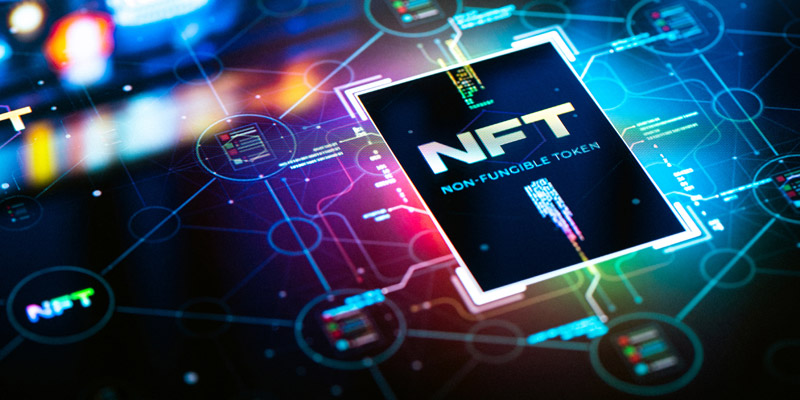Non-Fungible Tokens (NFTs) have surged into the football world, offering clubs and investors a new way to engage with digital collectibles. For some, these tokens represent a cutting-edge financial innovation capable of diversifying club revenue streams. For others, they’re a mere marketing gimmick, in other words an overhyped product that may generate short-term cash inflows but lacks sustainable value. In this article, we’ll delve into the financial implications of NFTs in football, and how clubs and investors might navigate this evolving landscape.
NFTs 101: Understanding the concept
An NFT is a non-fungible token, a unique digital asset recorded on a blockchain, making it distinct from any other traditional asset. This uniqueness and scarcity underpins the asset’s perceived value. The price is often influenced by demand, utility, and emotional or cultural significance. The global trading volume is significant and was estimated to be around $24 billion in 2022. However, unlike conventional cryptocurrencies (such as Bitcoin or Ether), NFTs often have lower liquidity. A sudden spike in demand can inflate prices quickly, but the reverse can also occur, leaving holders with an illiquid or significantly devalued asset.
Why are NFTs relevant in Football ?
- The massive fan base allows clubs to operate globally, providing them with a vast potential market to reach.
- Clubs can use NFTs to diversify revenue streams beyond traditional matchday income, broadcasting rights, and sponsorship deals (learn more about sponsorship deals, click here)
How clubs monetize NFTs
1. Initial NFT sales
By creating limited-edition tokens or player collectibles, clubs can generate immediate capital. When NFTs sell out, the revenue can improve cash flow and therefore also short-term liquidity.
For example, in July 2022, FC Barcelona auctioned their first NFT titled « In a Way, Immortal, » inspired by Johan Cruyff’s iconic 1973 goal, which was sold for $693,000.

2. Secondary Market Royalties
Many NFT contracts are coded so that the original issuer (in this case, the football club) receives a percentage of sales each time the NFT is resold on secondary markets. This revenue model can create a steady stream of passive income over time, improving the club’s Return on Investment (ROI).
3. Additional benefits of NFTs
- Membership Privileges: Some NFTs act also as digital memberships, offering owners exclusive access to player meet-and-greets, signed jerseys, or VIP seats. These benefits can definitely increase the asset’s intrinsic value and justify higher valuations.
- Marketing Synergies: Beyond revenue, NFTs can boost brand visibility. Especially when marketing campaigns are launched in partnership with major crypto exchanges or NFT marketplaces.
Examples of NFTs Initiatives
Sorare (Digital Player Cards): Sorare’s blockchain is a fantasy football platform that has partnered with over 200 clubs, including Liverpool, Real Madrid, and Paris Saint-Germain. Each digital card is an NFT with different rarity tiers, generating significant trading volumes on secondary markets with users exchanging these cards.
Juventus FC Collectibles: Juventus launched NFT collectibles tied to milestone moments, integrating them into fan loyalty programs. Some collectors have enjoyed exclusive tours and meetups, enhancing even more the tokens’ perceived value as explained before. Moreover, several other top European clubs have launched similar NFT strategies granting additional benefits to the ownership (e.g. Manchester City granting fans virtual access to the Etihad Stadium for behind-the-scenes experiences).
Criticism
Even though NFTs can be presented with numerous advantages and benefits, they face many criticism from the football and global spheres.
1. Volatility and speculation
Critics argue that NFT values can be disproportionately influenced by hype and speculation rather than sustainable demand or intrinsic worth. Additionally, a player’s form might affect the perceived value of an associated NFT, which results in even more volatility since some players can really be inconsistent.
2. Regulatory uncertainty
As securities regulators worldwide scrutinize digital assets, clubs must ensure compliance with national and international financial laws. This can be hard when facing a relatively emerging technology and non-compliance could result in reputational harm besides potential legal liabilities. Indeed, NFT transactions may be subject to capital gains tax or value-added tax (VAT), depending on the jurisdiction.
3. Environmental Concerns
Generating NFTs on energy-intensive blockchains has been criticized for high carbon footprints. Although more efficient protocols are emerging nowadays, the environmental impact remains a key concern for socially conscious fans.
Real Innovation vs. Marketing Gimmick—Where’s the Line?
Distinguishing real innovation from a marketing gimmick ultimately depends on the value that NFTs deliver to both clubs and supporters. True innovation involves creating digital assets that enhance fan engagement, generate sustainable revenue streams, and seamlessly integrate into a club’s broader financial and branding strategy. When NFTs only chase market hype, offering little more than flashy announcements or speculative resale opportunities, they risk being seen as short term marketing tricks.
In essence, the dividing line lies in whether NFTs provide enduring benefits, strengthen club-fan relationships, and remain relevant long after the initial buzz. If managed effectively, NFTs could become a permanent part of football’s changing financial scene; if not, they might just be viewed as another short-lived trend.

